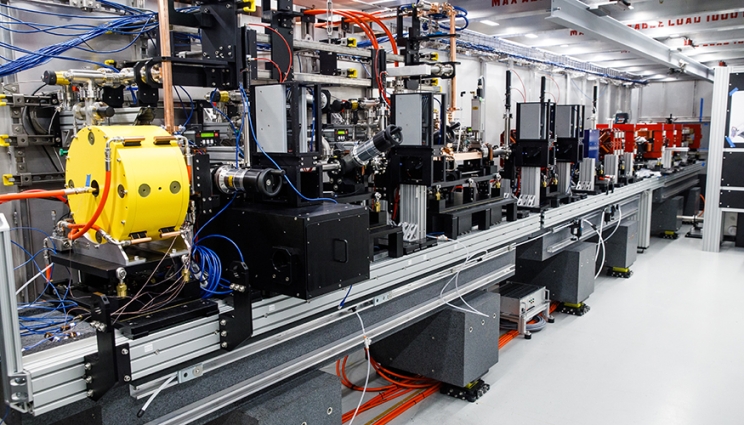
The Compact X-ray Free Electron Laser (CXFEL) will fit neatly in a traditional lab space at a fraction of the massive cost of traditional X-ray Free Electron Lasers (XFEL). In addition to size and cost differences, both XFEL and CXFEL devices have different roles to play and lend themselves to different types of experiments. The Compact X-ray Light Source, a prototype instrument, is pictured here. Photo courtesy of Arizona State University.
Lawrence Livermore National Laboratory (LLNL) and University of California, Davis researchers are assisting Arizona State University with a new laser facility that will use ultrafast pulsed X-ray beams to study biological processes, materials and other research at the atomic level.
In March, the National Science Foundation announced that it was awarding $90.8 million to Tempe-based ASU to build a Compact X-ray Free-Electron Laser, or CXFEL, facility.
“One of the reasons that we're excited about the CXFEL is that, as we have more of these compact machines come online, more scientists will have the opportunity to do more science,” said Matthias Frank, a team leader and a biophysicist in the LLNL's Biology and Biotechnology Division.
LLNL and UC Davis scientists assisted ASU in the planning and proposal stages to the National Science Foundation for the CXFEL, helping define the machine's science applications and the requirements for experimental end stations.
“Since we're part of the commissioning process, we'll be involved in some of the early experiments for both the CXFEL and its companion machine, the Compact X-ray Light Source,” Frank said.
One of LLNL's tasks will be to develop and supply novel chips comprised of polymer composites for biological sample platforms. They'll be produced at the Lab's Advanced Manufacturing Laboratory and at UC Davis.
The facility's suite of ultrafast X-ray beams will probe the dynamics of different biological processes, such as photosynthesis in plants, DNA repair and protein functions. The unique set of probes also will measure the physics of quantum materials that may lead to breakthrough technologies such as novel superconductors that would revolutionize energy production and storage or quantum computers.
The CXFEL machine will be the first of its kind in the world. It will provide X-ray pulses so short that they will outrun X-ray damage processes. As a result, scientists can conduct novel science to explore the structure and dynamics of nature and materials as never before.
In Frank's view, the CXFEL will allow scientists to better understand the changes in protein structures as they perform biological functions by allowing protein microcrystals to be exposed to X-rays to measure their diffraction and permit the measurement of protein structural changes or the chemical changes of metals, such as zinc and iron, in biological process.
In addition to Frank, the Livermore team working with ASU and UC Davis includes physical chemist Megan Shelby, postdoctoral researcher Sankar Narayanasamy and biologist Matt Coleman. The UC Davis team is led by Tonya Kuhl, the head of the university's chemical engineering department.
Frank's team is funded by a grant from the National Institutes of Health that supports the basic technology development and their participation in the CXFEL planning.
News from: https://www.llnl.gov/news/lab-researchers-assist-new-compact-x-ray-fel


